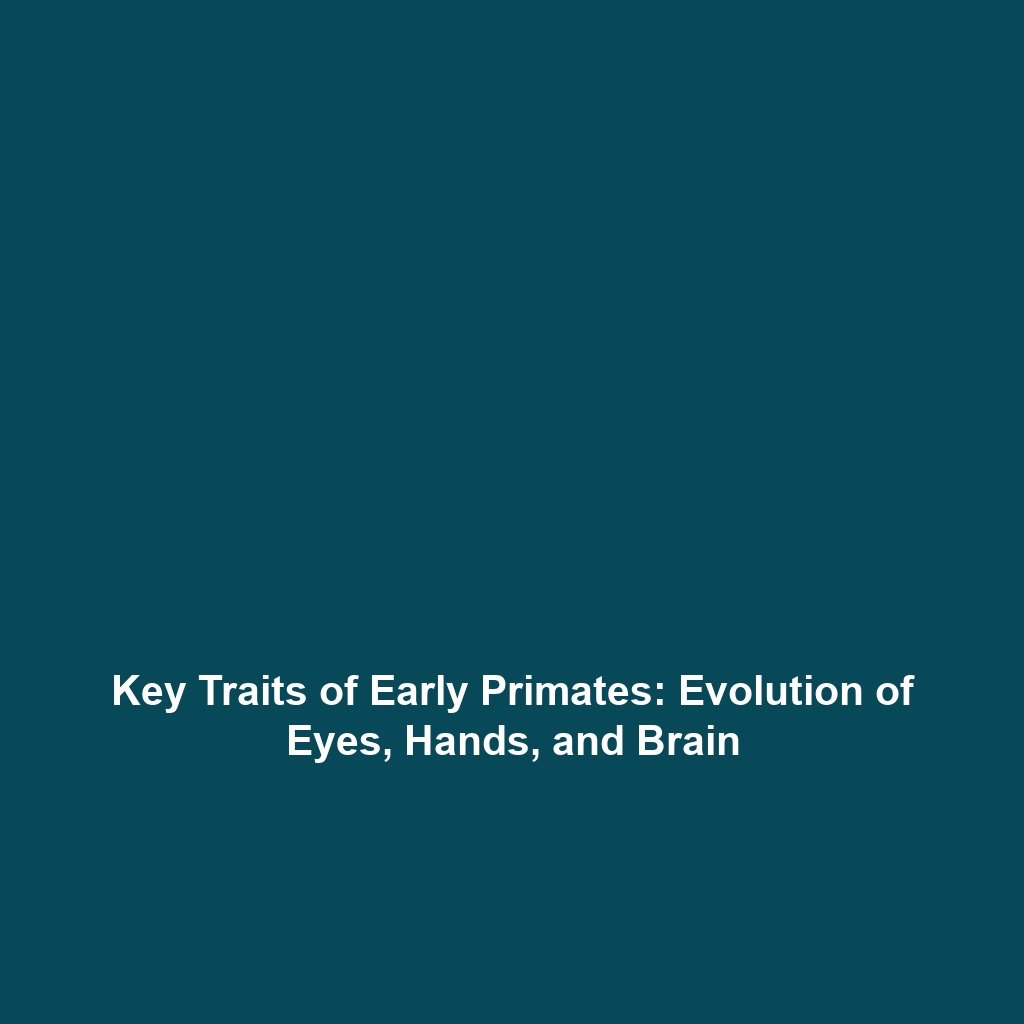Characteristics of Early Primates and Their Role in Human Evolution
Category: Human Evolution
Introduction:
The evolutionary journey of human beings is intricately linked to the remarkable characteristics of early primates. These organisms developed distinctive traits such as forward-facing eyes, grasping hands, and increased brain development, all of which played a pivotal role in shaping the path of human evolution. Understanding these traits not only highlights the biological adaptations that supported survival but also provides insights into the cognitive capabilities that evolved over millions of years.
Key Concepts
Several key concepts define the significance of early primate characteristics in the context of human evolution:
1. Forward-Facing Eyes
Forward-facing eyes provided stereoscopic vision, enhancing depth perception. This adaptation was crucial for foraging and identifying predators, setting the stage for the advanced visual processing observed in modern humans.
2. Grasping Hands
The evolution of grasping hands allowed early primates to maneuver through their environment more effectively. This adaptation enabled them to climb trees and manipulate objects, which was essential for gathering food and crafting rudimentary tools.
3. Greater Brain Development
Increased brain size relative to body mass corresponded with improved cognitive functions. This neurological advancement provided early primates with the ability to solve complex problems, communicate, and develop social structures, key elements that are fundamental to human evolution.
Applications and Real-World Uses
Understanding the characteristics of early primates informs various fields, particularly in the following ways:
- Evolutionary Studies: Highlighting how traits of early primates reflect adaptive challenges faced throughout evolutionary history.
- Anthropology: Insights into social behaviors and tool use that may have influenced the evolution of human societies.
- Biological Research: Applications in comparative studies emphasizing evolutionary similarities between primates and humans, particularly in brain function and tool use.
Current Challenges
Despite advancements in research, several challenges persist as scientists study the characteristics of early primates:
- Fragmentary Fossil Record: Incomplete skeletal remains make it challenging to construct a full picture of early primate anatomy and behavior.
- Evolutionary Complexity: The multifactorial nature of evolution complicates the understanding of how specific traits developed and their interrelations.
- Environmental Influences: Variability in ancient ecosystems adds layers of difficulty in interpreting the adaptive significance of traits.
Future Research and Innovations
Looking forward, several areas of research promise to yield further insights into early primate characteristics and their implications for human evolution:
- Genetic Studies: Advances in genetic sequencing could provide deeper insights into the evolutionary relationships among primate species.
- Neuroscience Innovations: Techniques like neuroimaging may unveil the complexities of brain functionality shared between early primates and modern humans.
- Multidisciplinary Approaches: Collaborations between anthropology, archaeology, and biology may lead to comprehensive models of primate evolution.
Conclusion
The characteristics developed by early primates—forward-facing eyes, grasping hands, and greater brain development—are foundational elements in understanding human evolution. By examining these traits, we gain essential insights into the adaptive strategies that shaped the evolutionary narrative of our species. As research continues to evolve, further exploration into these characteristics will not only deepen our understanding of the past but will also illuminate the path forward in human biological and cultural evolution. For more on human evolution, consider exploring our articles on Primate Behaviour and The Evolution of Intelligence.
